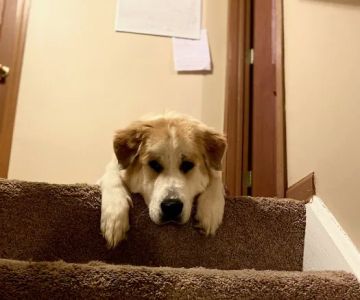Cat Flea Treatment Cost and Options: What You Need to Know
As a cat owner, I’ve experienced firsthand the challenges that come with flea infestations. Fleas are more than just an annoyance for your pet; they can cause itching, discomfort, and even lead to serious health issues like anemia or skin infections if left untreated. When my cat, Mittens, first got fleas, I wasn’t sure where to start with treatment options, and the costs quickly became a concern. Over time, I’ve learned that there are many ways to treat fleas, each with its own price point and effectiveness. In this article, I’ll break down the different cat flea treatment options, their costs, and how to choose the right one for your cat’s health and your budget.
1. The Impact of Fleas on Cats
Fleas are not only uncomfortable for cats, but they also pose health risks. The most common symptom I noticed when Mittens had fleas was excessive scratching and grooming, which often led to bald spots and irritated skin. Fleas can cause more serious problems, too, such as flea allergy dermatitis, which is an allergic reaction to flea saliva, and tapeworms, which can be transmitted when a cat swallows an infected flea. In severe cases, fleas can lead to anemia, especially in kittens or older cats, due to the blood loss they cause. Because of these risks, it’s important to take action as soon as you notice signs of fleas. Treatment isn’t just about getting rid of the bugs—it’s about protecting your cat’s overall health.
2. Common Cat Flea Treatment Options
When I first started researching flea treatments for Mittens, I found that there are numerous options available. Each treatment type varies in terms of how quickly it works, how long it lasts, and, of course, how much it costs. Here are the main categories of flea treatments for cats:
- Topical Treatments: These are liquids applied to your cat’s skin, usually between the shoulder blades, where they can’t lick. Topical flea treatments are popular for their convenience and effectiveness. Common brands include Frontline, Advantage, and Revolution. They are usually applied monthly and work by killing fleas on contact.
- Oral Medications: Oral flea medications, like Capstar and Comfortis, are taken by your cat to kill fleas. These are typically fast-acting and can kill fleas within hours. Some oral medications provide longer-term protection and prevent future infestations, but they can be a bit pricier than topical treatments.
- Flea Collars: Flea collars, like Seresto, are another option. They work by releasing chemicals that kill and repel fleas. I used a flea collar for Mittens and found it effective for long-term protection, but some cats may be sensitive to the collar’s material or the chemicals it uses, so it’s important to monitor for any signs of irritation.
- Flea Shampoos: Flea shampoos are a good option if you want a quick solution, as they kill fleas on contact. However, they don’t provide long-lasting protection, so they’re best used in combination with another treatment. I found that bathing Mittens with flea shampoo gave immediate relief, but I still needed to follow up with a longer-lasting treatment.
- Flea Sprays: Flea sprays are applied directly to your cat’s fur and can kill fleas on contact. They are often used as part of a more comprehensive flea treatment plan. However, they tend to be less convenient and require more frequent application compared to other treatments.
3. How Much Do Flea Treatments for Cats Cost?
The cost of flea treatments varies significantly depending on the type of product and the brand. Here’s a breakdown of the typical costs I encountered when looking into different treatments for Mittens:
- Topical Treatments: A monthly dose of a popular topical flea treatment can cost between $10 and $30, depending on the brand and the size of your cat. For example, a box of 6 treatments of Frontline for a medium-sized cat may cost around $40 to $50, which gives you about six months of protection.
- Oral Medications: Oral flea medications tend to be more expensive, typically ranging from $20 to $60 for a month’s supply. Brands like Comfortis and Capstar may cost anywhere from $30 to $60 for a full course, depending on your cat’s weight and the retailer.
- Flea Collars: Flea collars like Seresto are a bit more expensive upfront, costing around $50 for a collar that lasts up to 8 months. While this is a higher initial investment, it works out to a relatively low cost per month for long-term flea prevention.
- Flea Shampoos: Flea shampoos are typically priced between $5 and $20 per bottle. However, because they don’t provide long-term protection, they’re usually used in combination with other treatments.
- Flea Sprays: Flea sprays usually cost between $10 and $30, depending on the brand and the size of the bottle. Like flea shampoos, these sprays are often used for immediate relief but are not a standalone long-term solution.
4. Considering the Cost-Effectiveness of Flea Treatments
When deciding on a flea treatment for Mittens, I had to consider both the effectiveness and the cost. While I could have opted for the cheaper flea shampoos or sprays, I realized that they wouldn’t provide the long-term protection I needed. I ultimately went with a combination of a monthly topical treatment and a flea collar for added protection. While it was a bit more expensive upfront, I found that it saved me money in the long run by preventing recurring infestations and reducing the need for extra treatments.
It’s important to remember that treating fleas isn’t just about the immediate cost—it’s about the long-term investment in your pet’s health. If you don’t treat fleas promptly, they can lead to more serious health issues that could result in even higher vet bills. For example, flea allergies can cause secondary infections, and the constant scratching can lead to hair loss, skin damage, and bacterial infections, all of which can be costly to treat.
5. Alternatives and Natural Flea Treatments
If you’re concerned about the cost of traditional flea treatments or want a more natural approach, there are several alternative methods to consider. These treatments may not be as immediately effective as the chemical-based options, but they can be helpful as part of a larger flea prevention plan.
- Essential Oils: Some people use essential oils like lavender, eucalyptus, or peppermint to repel fleas. However, it’s important to note that essential oils can be toxic to cats if used incorrectly, so you should consult with your vet before using them on your cat.
- Flea Comb: A flea comb is a non-toxic way to physically remove fleas from your cat’s fur. I’ve used this method on Mittens in the past, but it requires patience and regular maintenance to be effective. It’s a good option for small infestations.
- Environmental Control: In addition to treating your cat, it’s important to treat your home. Fleas can live in carpets, bedding, and furniture, so regular cleaning and vacuuming can help reduce the flea population. Some people also use flea traps or natural flea repellents for their homes.
6. Conclusion: Finding the Right Flea Treatment for Your Cat
Choosing the right flea treatment for your cat depends on a variety of factors, including your cat’s health, your budget, and how severe the flea infestation is. While there are many flea treatment options available, I found that the most cost-effective approach for me was a combination of a topical treatment and a flea collar. It provided long-term protection while minimizing the need for constant reapplication.
Before deciding on a treatment, I highly recommend consulting with your vet to ensure that the product you choose is safe and effective for your cat. Some cats may have allergies or sensitivities to certain ingredients, so it’s important to find a solution that works best for them. Whether you’re dealing with a mild infestation or want to prevent future issues, there are plenty of options available to keep your cat flea-free and healthy.
For more information on flea treatments and to explore the best options for your cat, check out Hidden Brook Veterinary for expert advice and recommendations on the right flea treatment for your pet’s needs.











